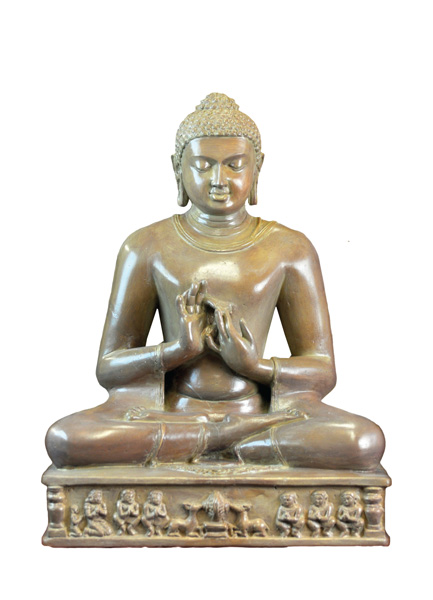 Uposatha, a Pali word, is often translated as “Sabbath.” In Buddhist lands this traditionally follows the phases of the moon such that every time the moon is either full, empty (new), or half way in between (first or last quarter) we get an uposatha day. That is pretty cool in itself, but wait til you hear what Uposatha days are for! Anyway, they are generally seven days apart but sometimes six or eight.
Uposatha, a Pali word, is often translated as “Sabbath.” In Buddhist lands this traditionally follows the phases of the moon such that every time the moon is either full, empty (new), or half way in between (first or last quarter) we get an uposatha day. That is pretty cool in itself, but wait til you hear what Uposatha days are for! Anyway, they are generally seven days apart but sometimes six or eight.
Uposatha days are normally in Asia times for special Buddhist observances. Lay people will often spend the day at a monastery communing with monks or nuns, meditating, chanting,generally listening to a Dharma talk, offering to the Buddha or to the Sangha, and will also take eight or so monastic-style precepts for the day. Monks and nuns recite the Patimokkha every other Uposatha day, on full and new moon days, the hundreds of rules that they follow every day. This is pretty cool, but wait til you hear what you get to do on Uposatha days! Anyway, in Burma Uposatha days are like weekends; people do not have to go to work so that they are free for Buddhist observances.
On Uposatha days I am going to start making a regular posting to this blog, called Uposatha Dhamma. Each of these short postings will briefly discuss some aspect of Buddhist practice that you can touch in your daily life. These will not be essays (most of this site is devoted to essays), but enough words to inspire reflection throughout the week. And discussion… you are invited to post comments with questions, elaborations, personal experiences, and so on. And who are you? You are either a neophyte or a master. Starting simple, I hope the discussion then acquires some depth.
 I intend to start with the folds of the Noble Eightfold Path (Right View, Right Intention, Right Action, Right Speech, Right Livelihood, Right Effort, Right Mindfulness. Right Concentration). In the future we might take up the Refuges (Buddha, Dhamma, Sangha), the Brahmaviharas (Lovingkindness, Compassion, Sympathetic Joy and Equanimity), and so on. Like walking on a misty day, you should quickly find yourself saturated with the Buddha’s teaching, … except maybe in a year, it will take longer than a day.
I intend to start with the folds of the Noble Eightfold Path (Right View, Right Intention, Right Action, Right Speech, Right Livelihood, Right Effort, Right Mindfulness. Right Concentration). In the future we might take up the Refuges (Buddha, Dhamma, Sangha), the Brahmaviharas (Lovingkindness, Compassion, Sympathetic Joy and Equanimity), and so on. Like walking on a misty day, you should quickly find yourself saturated with the Buddha’s teaching, … except maybe in a year, it will take longer than a day.
For each of the topics I thought I would find some short optional reading, on-line. Here is the first text: The Noble Eightfold Path by Bhikkhu Bodhi. I’ll try not to depend on the text too strictly.
 The teachings will be what, as far as anyone can tell, original teachings of the Buddha. The two great inspirations in my own Buddhist career have been the Buddha and Thirteenth Century Japanese Zen Master Eihei Dogen. Of the two, the Buddha is clearly the more approachable, and the more systematic. Dogen can be quite inspiring and profound but also more than a bit obscure. I will also steer clear of Nagarjuna, the Mahayana Sutras and the Abhidharma. Just straight Buddha.
The teachings will be what, as far as anyone can tell, original teachings of the Buddha. The two great inspirations in my own Buddhist career have been the Buddha and Thirteenth Century Japanese Zen Master Eihei Dogen. Of the two, the Buddha is clearly the more approachable, and the more systematic. Dogen can be quite inspiring and profound but also more than a bit obscure. I will also steer clear of Nagarjuna, the Mahayana Sutras and the Abhidharma. Just straight Buddha.
I invite people to comment freely, starting with this post. What would you like from this blog? (As of now there are only nine subscribers, so the comments may be sparse for a while. Subscribe!)

Leave a Reply